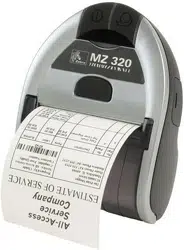Loading ...
Loading ...
Loading ...

Mobile Printing Systems
CPCL Programming Manual
Section 14
Configuration/
Control
Commands
pg. 14-200
continued
Zebra Printer Mirror Process
Zebra “alpha series” mobile printers (e. g. QL 220, RW 420) support a file mirroring process that allows
the printer to synchronize files with those stored on an FTP server. Since the process relies solely on the
FTP standard, no other special utilities are required. The files on the FTP server can be printer firmware
files or fonts, as well as lists of printer configuration commands (such as commands to change the printer’s
WEP key). In order for this file synchronization process to work properly, it is only required that the FTP
server support “Unix style” directory listings and that the modification time stamps of the files stored on
the FTP server are accurate.
Printer set up to support mirror process
In order to enable the mirror process on the printer, the following set/get variables are available:
ip.mirror.auto: on/off
If “on”, printer will automatically perform a mirror “fetch” command on power-up, and subsequently
every “freq” minutes. (see ip.mirror.freq, below)
ip.mirror.username: 20 bytes (string)
Username to use for FTP login
ip.mirror.password: 20 bytes (string)
Password for FTP account
ip.mirror.server: 40 bytes (string)
Server ip address or name (if DNS server info is provided via DHCP).
ip.mirror.path: 50 bytes (string)
Path on the FTP server where the mirror directory is located. Defaults to “companyname/model” (e.g.
“/Zebra/QL 320”).
NOTE: this must be an absolute path (i.e. it must start with / or ~)
ip.mirror.freq: 0-65535 minutes
Number of minutes to wait before performing another mirror fetch. If this value is “0”, the mirror
process will only be performed once immediately on power-up. This parameter only applies if
ip.mirror.auto is “on”. Caution should be used if setting a low value - otherwise the printer may spend
most of its time performing the mirror process.
Loading ...
Loading ...
Loading ...
